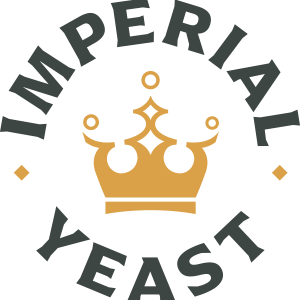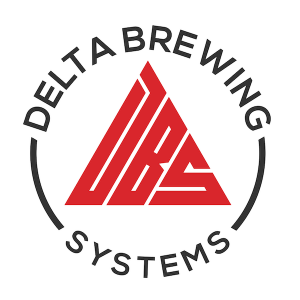Author: Jordan Folks
When it comes to making a high quality batch of beer, there are a few recommendations that brewers seem to ubiquitously agree on, two of the most important being controlling fermentation temperature and pitching the proper amount of yeast. Both of these variables are determined based on the style of beer being brewed, with lagers purportedly requiring a cooler fermentation temperature and higher pitch rate of upwards of 1.5 million cells per °Plato per ml wort, whereas ales can be fermented warmer with a lower pitch rate of around 0.75 million cells/°Plato/ml wort.
The reason for yeast pitch rate being a function of temperature is that, like nearly all chemical reactions, fermentation in general occurs more hastily in warmer environments, while cooler setting ostensibly put more stress on the yeast, which can lead to the production of perceptible by-products such as esters, phenols, and fusel alcohols deemed inappropriate in many styles. As such, by pitching more viable yeast, the overall demands on each cell are reduced, thus limiting the risk of off-flavor production. While a number of past xBmts have shown that tasters struggle to tell apart lagers fermented with certain strains either cool or warm, they’ve all focused specifically on temperature, meaning the cool fermented batches were pitched at rates typically recommended for ale fermentations. Similarly, for all past xBmts on yeast pitch rate, the fermentation temperature was the same between batches.
As the Brülosophy contributor who employs the most traditional methods when making lagers, not only do I prefer fermenting these styles cool, but I always target the proper yeast pitch rate, and I feel this has contributed to my success. When reviewing past findings on both of these variables, I couldn’t help but wonder if the unexpected indistinguishability in many of those xBmts was due to the fact just one of these purportedly essential factors was being accounted for – perhaps the stress of a low pitch rate in a cool fermented lager produces the same by-products as a warm fermented lager pitched with a similar amount of yeast. Curious to see for myself, I designed an xBmt to test it out!
| PURPOSE |
To evaluate the differences between a Munich Helles that was fermented cool with a lager yeast pitch rate and one fermented warm with an ale yeast pitch rate.
| METHODS |
For this xBmt, I went with a simple Munich Helles recipe, as it’s known for being a delicate style that possesses minimal fermentation character and has little for off-flavors to hide behind. Big thanks to F.H. Steinbart for hooking me up with the malt for this batch!
Hot As A Pistol But Cool Inside
Recipe Details
| Batch Size | Boil Time | IBU | SRM | Est. OG | Est. FG | ABV |
|---|---|---|---|---|---|---|
| 5.1 gal | 90 min | 21.6 | 4.1 SRM | 1.043 | 1.011 | 4.2 % |
| Actuals | 1.043 | 1.011 | 4.2 % | |||
Fermentables
| Name | Amount | % |
|---|---|---|
| Barke Pilsner | 9.5 lbs | 95 |
| Carahell | 8 oz | 5 |
Hops
| Name | Amount | Time | Use | Form | Alpha % |
|---|---|---|---|---|---|
| Hallertauer Mittelfrueh | 28 g | 70 min | Boil | Pellet | 2.2 |
| Hallertauer Mittelfrueh | 43 g | 40 min | Boil | Pellet | 2.2 |
Yeast
| Name | Lab | Attenuation | Temperature |
|---|---|---|---|
| Pilgrimage (L26) | Imperial Yeast | 77% | 44.1°F - 55.9°F |
Notes
| Water Profile: Ca 48 | Mg 5 | Na 10 | SO4 24 | Cl 67 |
Download
| Download this recipe's BeerXML file |
After collecting the full volume of water for a two 5 gallon/19 liter batches, adjusting each to my desired profile, and flipping the switches on my Clawhammer Supply 240v controllers to get them heating up, I weighed out and milled the grain.
Since these were classic German lagers, I opted to perform step mashes with rests at 144°F/62°C, 160°F/71°C, and 170°F/77°C.
During the mash rests, I weighed out the kettle hop additions.
Once the mashes was finished, I removed the grains and proceeded to boil each wort for 90 minutes, adding hops at the times listed in the recipe. When the boils were complete, I chilled the worts during transfer to identical carboys, the placed one in a chamber controlled to 48˚F/9˚C while the other was placed in a chamber controlled to 66˚F/19˚C. Refractometer readings showed the worts were at the same target OG.

With both batches stabilized at their respective temperatures a few hours later, I transferred the clear wort from each to separate fermentation kegs before aerating them with the same amount of pure oxygen. Considering the freshness of each pouch of Imperial Yeast L26 Pilgrimage, which were manufactured on the same date, I determined 2 pouches would achieve an ideal lager pitch rate while the warm ferment batch received 1 pouch of yeast.
The beer pitched with 2 pouches of yeast was left to ferment at 48°F/9°C for 12 days weeks before I began gradually raising the temperature to 62˚F/17˚C for a diacetyl rest, while the beer pitched with a single pouch of yeast was left at 66˚F/19˚C the entire time. After 2 weeks, signs of activity in both were absent, so I moved the beers into the same chamber and gradually reduced the temperature over the course of a few days. Once both beers were stabilized at 32˚F/0˚C, I took hydrometer measurements showing a very slight difference in FG.

At this point, the beers were pressure-transferred to CO2 purged serving kegs that were placed in my keezer and left to lager for 4 weeks before they were ready for evaluation.

| RESULTS |
A total of 18 people of varying levels of experience participated in this xBmt. Each participant was served 1 sample of the beer fermented warm with a lower yeast pitch rate and 2 samples of the beer fermented cool with a higher yeast pitch rate in different colored opaque cups then asked to identify the unique sample. While 10 tasters (p<0.05) would have had to accurately identify the unique sample in order to reach statistical significance, only 8 did (p=0.22), indicating participants in this xBmt were unable to reliably distinguish a Munich Helles fermented cool with a lager yeast pitch rate from the same beer fermented warm with an ale yeast pitch rate.
My Impressions: Out of the 5 semi-blind triangle tests I attempted, I correctly identified the odd-beer-out every time. It’s certainly possible my awareness of the variable biased my impressions, as I perceived the warm fermented beer has being more sharp with an absence of sulfur and some fruity esters, while the cool fermented batch was softer with a light sulfur note and no esters – all qualities one might expect given the variables in question.
| DISCUSSION |
Brewers interested in producing quality beer are implored to monitor both fermentation temperature and yeast pitch rate, variables that are largely dependent on each other – whereas cool fermented lagers demand a higher yeast pitch rate, a lower yeast pitch rate can be used for warm fermented ales. For lagers specifically, pitching too little yeast when fermenting cool can lead to the development of undesirable off-flavors, similar to what is purported to occur when fermenting such styles at warmer temperatures. Curiously, in this xBmt were unable to reliably distinguish a Munich Helles fermented cool with a lager yeast pitch rate from the same beer fermented warm with an ale yeast pitch rate.
Considering the combined variable nature of this xBmt, it’s difficult to discern what impact yeast pitch rate and fermentation had on their own, and the fact tasters couldn’t reliably tell them apart suggests neither had a perceptibly meaningful impact. If Imperial Yeast L26 Pilgrimage is as robust a strain as others we’ve tested out, it’s possible the results would have been the same had the variable been specifically fermentation temperature with yeast pitch rate held constant, and vice versa, or perhaps that would have led to a more drastic difference.
Findings like these are both fascinating and confounding to me. There are reasons brewers of the best lager beers employ the methods they do, and those seeking to match their quality are recommended to do the same, which my anecdotal experience backs up. I fully expected this xBmt to return a significant results, and hence, I’m stumped that it didn’t. Folks often talk about how different people possess different sensitivities, which given my triangle test performance, I’m wont to lean on as an explanation for these results. Or, perhaps the beers really were more similar than I perceived them to be. Either way, one objective truth is that preference is wholly subjective, so even if there is a real difference between these beers, that doesn’t mean one is necessarily better than the other, as that’s up for each drinker to decide for themselves. As for me, I’ll be sticking to my traditional ways when making lager beers while accepting that others may opt for an alternative approach.
If you have any thoughts about this xBmt, please do not hesitate to share in the comments section below!
Support Brülosophy In Style!
All designs are available in various colors and sizes on Amazon!
Follow Brülosophy on:
FACEBOOK | TWITTER | INSTAGRAM
If you enjoy this stuff and feel compelled to support Brulosophy.com, please check out the Support page for details on how you can very easily do so. Thanks!

















6 thoughts on “exBEERiment | Impact Fermentation Temperature Has When Using Proper Yeast Pitch Rates In A Munich Helles”
A great experiment and a satisfying result. My own interpretation of these results is that, if we stick to traditional methods we are not wasting our time because we who brewed the beer will taste a superior product. However if we are short of time, we can choose to cut corners and our guests will not reliably notice a difference.
Very nice xbmt! I really like the two variables used in this one.
I’m curious if you tried any unofficial evaluations before the 4 weeks of lagering? I’d be curious to know if you thought the beers were more similar or more different before the lagering period?
Although the differences persisted to my palate, they might have been more stark before lagering as the unlagered “ale” tasted ready pretty much instantly while the unlagered “lager” had that ‘green’ young lager taste initially.
I’ve struggled with this a great deal since I ferment all my lagers at room temperatures (20° C / 68° F) but I do so under pressure (spunding valve – 15psi) so I always wondered about pitch rates that have been listed by the software one chooses to use (I use BrewFather but also Brewer’s Friend, Beersmith etc.) – this exBmt, at the very least, provides me some insight into pitching at Ale temps/rates instead of what I had been doing; overpitching at Ale temps/Lager rates. I have not had any issues, regardless, and have had multiple medals for my Helles and my Czech Premium Pale / Premium lagers. This does allow me though, to, hopefully target my pitch rates a bit more accurately in the future. So thank you for this exBEERiment!! Cheers!
You shouldn’t be stumped by the lack of significant differences.
There’s a large carryover effect when drinking beer side-by-side, so most people are never going to taste differences unless you are testing a very pungent off-flavor.
If you have a trained palate and you slow down when testing, cleaning your palate between sampling, it’s very likely many will be able to tell differences.
Happy 2024!
Did you happen to ask the correct tasters how they perceived the beers? It would be interesting to know whether they felt the differences were due to esters and sulphur too.